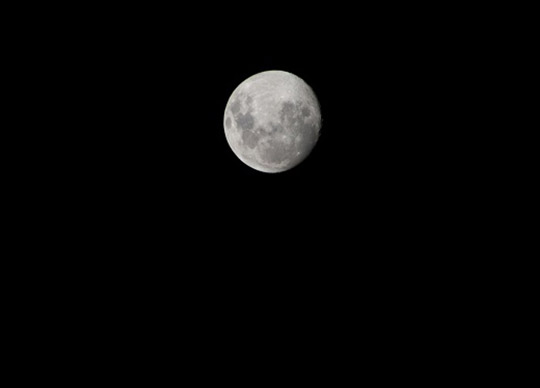

Image: The waxing gibbous Moon above the southern Atlantic Ocean. Credits: NASA.
As part of NASA’s regular cadence of robotic lunar missions through Artemis, the agency has selected a new scientific payload to establish the age and composition of hilly terrain created by volcanic activity on the near side of the Moon.
The DIMPLE instrument suite, short for Dating an Irregular Mare Patch with a Lunar Explorer, will investigate the Ina Irregular Mare Patch, discovered in 1971 by Apollo 15 orbital images. Learning more about this mound will address outstanding questions about the evolution of the Moon, which in turn can provide clues to the history of the entire solar system.
DIMPLE is the result of the third annual proposal call for PRISM (Payloads and Research Investigations on the Surface of the Moon), which sends science investigations to the Moon through a NASA initiative called CLPS, or Commercial Lunar Payload Services. This PRISM call was the first that allowed proposers to choose and justify a particular landing site for conducting high-priority lunar science investigations.
“This commercial payload delivery initiative is helping to provide a burst of lunar science and exploration,” said Nicola Fox, associate administrator for science at NASA Headquarters in Washington. “DIMPLE will add to a growing body of knowledge about the Moon, which in turn helps us understand the origins of Earth and other planets in the solar system. Additionally, the more we understand about our closest neighbor, the more we can support long-term human exploration at the Moon, and someday, Mars.”
The cost cap for the payload suite is $50 million, and the delivery date is set for no earlier than the second quarter of 2027. NASA expects to work on issuing a CLPS task order in 2024 to determine the launch services to deliver DIMPLE to the Moon.
Such efforts are part of NASA’s larger lunar plans – through Artemis, NASA will explore more of the Moon than ever before with advanced robotics and astronauts.
The Moon is a rich destination for scientific discovery. While some 70 Irregular Mare Patches have been discovered by NASA’s Lunar Reconnaissance Orbiter, Ina remains the largest identified so far.
DIMPLE will help determine whether Irregular Mare Patches formed from recent or ancient volcanic processes. The mission will make use of a CLPS-provided rover, a collection gripping instrument, and a spectrometer that can help determine composition of the lunar material to analyze the age and composition of samples collected from the surface of Ina. DIMPLE will be able to collect and analyze anywhere from three to more than 25 samples to learn more about the timing of the volcanic activity that formed this feature. For example, if the volcanic activity turns out to be geologically recent, it implies that either the lunar mantle was warmer than previously thought, or that radioactive elements contributed to small-scale eruptions continuing later in lunar evolution than previously thought. Either scenario would help us better understand the geochemical state of the Moon over time. If, on the other hand, the eruptions creating Ina turn out to be older, it would lead to reevaluating the age and evolution of craters on the Moon – which would have implications for understanding the history of Earth and other planets in the solar system.
“With the selection of DIMPLE, we aim to definitively resolve the debate on how recently the Moon was volcanically active,” said Joel Kearns, deputy associate administrator for exploration in NASA’s Science Mission Directorate. “Not only is this a scientifically intriguing enigma that will fundamentally change our understanding of lunar thermal evolution, but this is also the demonstration of an exciting technology that can be used to measure absolute ages of a variety of geologic terrains across the solar system.”
The principal investigator for the DIMPLE mission is F. Scott Anderson of Southwest Research Institute’s Solar System Science and Exploration Division, which is located in Boulder, Colorado. The CLPS initiative is a key part of NASA’s Artemis lunar exploration efforts. By taking advantage of commercial launch providers, NASA can perform cutting-edge science at the Moon in a more cost-effective way. The science and technology payloads sent to the Moon’s surface as part of the initiative will help lay the foundation for the next human missions.
For more information, visit: https://www.nasa.gov/clps.





